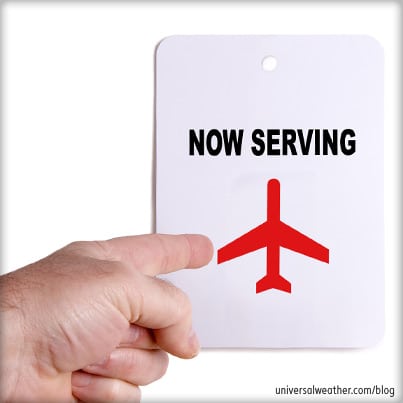Managing Airway Slots and Slot Delays in Europe


This business aviation blog post continues from our previous post: Intro to Airway Slots in Europe, Eurocontrol, and the NM.
Once you have your airway slots, there are ways to manage them. For business aircraft operators, best practice for avoiding delays is to keep abreast of current airway congestion, and remain in a state of “departure readiness” when faced with last-minute slot delays. Here are some useful tips to help you through this process:
1. Remember that airway slot notifications are forwarded to the flight plan originator
Once a flight plan is filed, the Network Operations Centre (NOC) will issue an airway slot within two hours of departure if they deem it necessary. Slot messages are issued to the flight plan originator only by way of AFTN or SITA. The slots are also visible on the Network Operations Portal (NOP). If you are using a 3rd-party provider, they can then forward the slot time to you via e-mail or communicate the information via phone. If you aren’t working with a 3rd-party provider, you may contact ATC for your airway slot notification.
2. Use NOP to view the airway slot situation
The Network Manager (NM) operates a Web-based, front-end-user interface called the Network Operations Portal (NOP) that allows operators and 3rd-party providers to access and view all sorts of information about the state of European airspace. On the day of operation, your flight department will be able to see whether your flight is subject to delay. The system will show the reason for the delay and options to mitigate it. There are two ways to access the NOP tool. First, there’s a secure logon format available only to vetted applicants, whereby you can interact with and manipulate the system. Second, there’s another form of open, public access where you can simply view the network situation and congestion forecasts.
Logging in allows you to view all filed flight plans, with the exception of “protected” flights. “Protected” flight status, where information is only viewable by ATC, is usually only available to VVIPs, diplomatic flights, and head-of-state flights. Operators must have valid reasons to request this status. In the past, it was possible to self-declare as a head of state in flight plan remarks, but this option has been eliminated as a result of too many pseudo head-of-state declarations.
3. Check airspace restrictions and congestions. Your route of flight and altitude may impact chance of slot delay
When planning a flight through EU airspace, best practice is to check the NM portal to determine current restrictions and congestion. The portal offers an online map indicating areas of congested airspace and airspace closures, to name a few. Experienced 3rd-party providers will be aware of issues such as airspace closures and take steps to route you around problems areas such as ATC strikes, as well as highly congested airspace. Special events such as the 2012 London Olympics, a head-of-state movement, or a military exercise will affect airspace and impact slot delay potential, so always check for this information in advance.
4. Avoid filing flight plans late
The worst-case scenario, in terms of delays, is if you file a flight plan late. Specifically, if there is a delay situation, you will receive a lengthier delay slot, as the system operates on a first-come-first-served basis. To avoid this issue in case of a delay, we recommend you file your flight plan early, up to five days in advance, for best airway slot results.
5. If you are facing a missed slot or slot delay, you may have options
If you’re not off the aircraft parking stand in enough time to meet the assigned airway slot time, you’ll typically need to delay your flight plan. If, however, you have a few minutes remaining in your slot window, you may be able to negotiate a short slot delay with ATC. You’ll have more negotiating room with the NM if your airway slot has not yet expired.
When faced with a slot delay with passengers onboard and doors closed, you may have ATC file a “ready message” (also known as “REA”) on your behalf. This may improve your options and allow for an immediate departure clearance in the event of a sudden airway slot cancellation. While an early departure is not guaranteed, a “REA” message can dramatically improve a slot delay situation.
Closing Thoughts
Traffic within Europe is expected to increase over the next few years, and it’s Eurocontrol’s responsibility to find viable solutions in managing airway demand. In the meantime, business aircraft operators can reduce airway slot delay potential by self-monitoring the traffic in the region or working with a 3rd-party provider.
Questions?
If you have any questions about this article, contact me at adamdowley@univ-wea.com.




